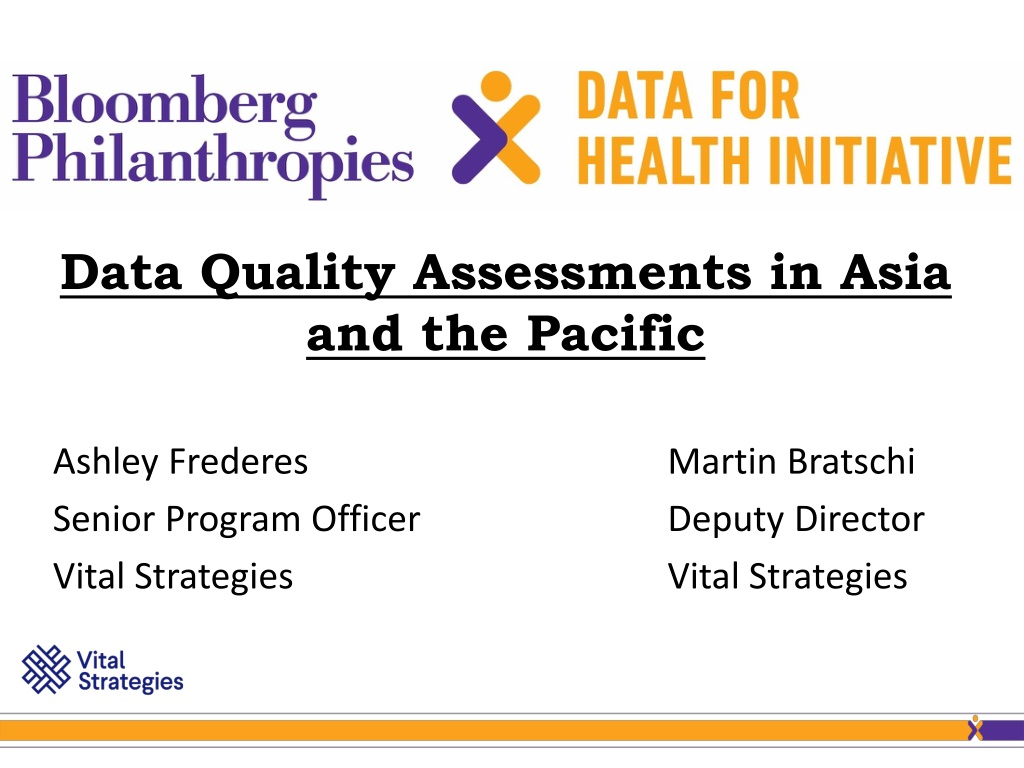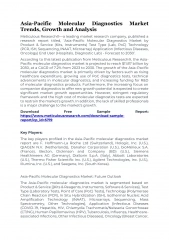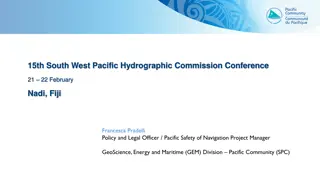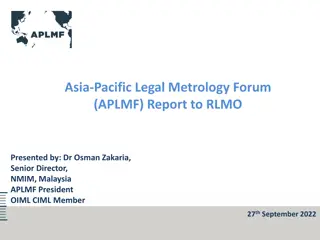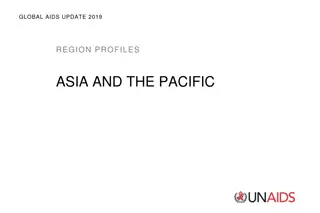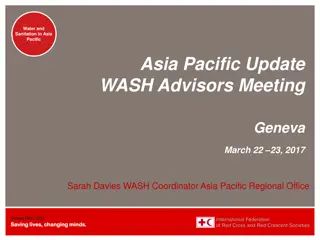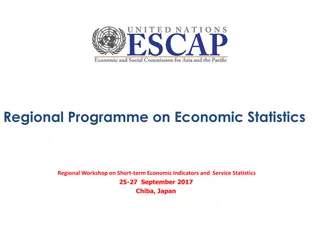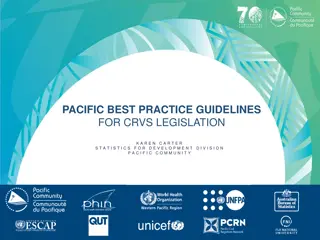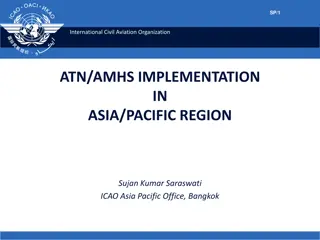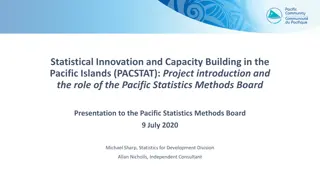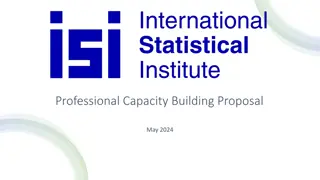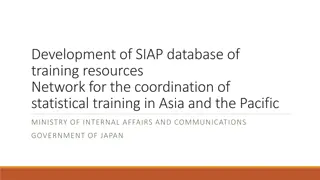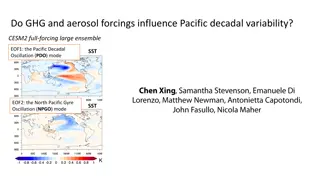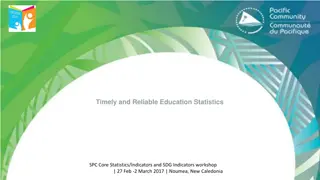Data Quality Assessments in Asia and the Pacific
Assessing data quality in health initiatives across Asia and the Pacific is crucial for informed decision-making. This report by Ashley Frederes (Senior Program Officer) and Martin Bratschi (Deputy Director) of Vital Strategies provides valuable insights and recommendations for improving data reliability, accuracy, and relevance in the region. The assessment covers various aspects such as data collection methods, analysis techniques, and reporting standards to enhance the overall effectiveness of health programs.
Download Presentation

Please find below an Image/Link to download the presentation.
The content on the website is provided AS IS for your information and personal use only. It may not be sold, licensed, or shared on other websites without obtaining consent from the author.If you encounter any issues during the download, it is possible that the publisher has removed the file from their server.
You are allowed to download the files provided on this website for personal or commercial use, subject to the condition that they are used lawfully. All files are the property of their respective owners.
The content on the website is provided AS IS for your information and personal use only. It may not be sold, licensed, or shared on other websites without obtaining consent from the author.
E N D
Presentation Transcript
Bloomberg Data for Health Initiative Data Quality Assessments in Asia and the Pacific Ashley Frederes Senior Program Officer Vital Strategies Martin Bratschi Deputy Director Vital Strategies
Data for Health Initiative D4H focus: Quality of cause of death (COD) data Completeness of vital event (VE) registration at national and subnational levels Data quality assessment methodologies and tools: VSPI score ANACONDA Completeness of vital event registration estimation Medical certificate of cause of death assessment tool Quality of ICD coding assessment tool 2
Vital Statistics Performance Index The VSPI assesses CRVS performance through use of mortality data as a proxy for the quality and utility of all of the vital statistics produced by the civil registration system * *Source: The Lancet 2015
Vital Statistics Performance Index Computed on a continuous scale from 0 to 1 for each calendar year of vital statistics data since 1980 Value of 1 or close to 1 indicates the data accurately represent the epidemiological profile of the population Value of less than 0.5 indicates that data are unreliable for policy and decision-making Six components: Completeness of death reporting Quality of death reporting Level of cause-specific detail Internal consistency Quality of age and sex reporting Data availability or timeliness 4
ANACONDA Uses a reliable software technology Java(FX) Accepts input data in Excel format Ability to analyse national and subnational datasets All core resources are contained in the tool
ANACONDA 6
ANACONDA 7
CRVS Data Quality Assessments in Asia and the Pacific 8
Solomon Islands: Quality of COD Data Challenges: Very Low VSPI score (<0.25) Prior to 2015, death registration was less than 2% and 9 different MCCOD forms in use Quality audit of 977 MCCOD forms from 2010 - 2014 revealed poor certification practices resulting in very high % of ill-defined COD Strategies: Establishment of National Mortality Committee Adoption of international MCCOD form, introduction of ICD-10 manual coding, and MCCOD training for all physicians Introduction of verbal autopsy for community deaths Early results: Quality audit of MCCOD forms received over May Dec 2016 revealed % of ill-defined causes of death is now 9%
Philippines: Quality of COD Data Challenge: Medium VSPI (0.50 0.69) Quality of mortality data is less useful for policy Strategies: MCCOD training for physicians & Verbal Autopsy for community deaths (PCVA) IRIS automated coding Improved Governance and Coordination ANACONDA Estimating completeness of vital event registration
Myanmar: Quality of COD Data Challenges: Very low VSPI score (<0.25) 84% of total deaths are community deaths 60% death registration completeness Over 20% of deaths with ill-defined COD Strategies: Strengthen capture and reporting of vital events MCCOD training for physicians Verbal Autopsy for community deaths Improve ICD-10 coding practices
Myanmar: Quality of COD Data 35% 5,581 VA collected from Jan to May 2017 32% 30% 25% 25% Pilot: 14 townships representing 4.6% of population 20% 20% 18% 18% 17% 15% 14% 12% 10% 9% 10% National Rollout: expand to additional 34 townships 6% 5% 3% 3% 2% 2% 2% 2% 1% 1% 1% 1% 0% 0% <29 days 29 days-5 6-11 years 12-19 20-29 30-39 40-49 50-59 60-69 70-79 80+ years Male (n=3056) Female (n=2525)
Questions? https://www.bloomberg.org/program/public- health/data-health/ http://mspgh.unimelb.edu.au/dataforhealth/res ources Ashley Frederes Afrederes@vitalstrategies.org Martin Bratschi Mbratschi@vitalstrategies.org 16
